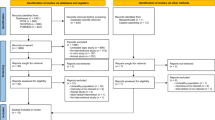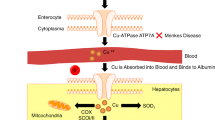Abstract
To clarify the mineral status in selenium (Se)-deficient rats fed a vitamin-free casein (VFC)-based or torula yeast (TY)-based diet, 24 weanling male Wistar rats were divided into 4 groups fed diets using VFC or TY as the protein source and containing Se at sufficient (0.5 μg/g,+Se) or deficient (0.019 μg/g for VFC-based and <0.005 μg/g for TY-based diets,−Se) level for 8 wk. TY supplied a larger amount of extra minerals (Na, K, Ca, Mg, Fe, Mn, Zn, and Cu) except Se than VFC. Se concentration and glutathione peroxidase activity were significantly lower in TY-fed rats than in VFC-fed rats, as well as in−Se rats compared to+Se rats. Compared to+Se rats, Fe concentration was higher in liver and muscle of−Se rats fed the VFC-based diet and in plasma, heart, liver, and tibia of−Se rats fed the TY-based diet. Compared to+Se rats, decreases of Mn concentration appeared in plasma, heart, and tibia of VFC-fed−Se rats and in brain, heart, liver and tibia of TY-fed−Se rats. There was also a little imbalance in Ca, Mg, Na, K, and Cu caused by Se deficiency. The results indicated that Se deficiency induced the mineral imbalance in rats, especially an increase in Fe and decrease in Mn, which was more severe in TY-fed rats than VFC-fed rats. However, TY cannot be used as a model for both Se and other mineral deficiency because of the extra minerals except Se found in TY. Instead, VFC can be employed, which contains fewer minerals except Se than TY and also can produce a severe degree of Se deficiency.
Similar content being viewed by others
References
X. Chen, G. Yang, J. Chen, X. Chen, Z. Wen, and K. Ge.Biol. Trace Elem. Res. 2, 91 (1980).
A. Peng and C. L. Yang,Biol. Trace Elem. Res. 28, 1 (1991).
E. Delilbasi, B. Turan, E. Yucel, R. Sasmaz, A. Isimer, and A. Sayal.Biol. Trace Elem. Res. 28, 21 (1991).
S. Yu, Y. Zhu, W. Li, Q. Huang, Z. Chang, Q. Zhang, and C. Hou.Biol. Trace Elem. Res. 29, 289 (1991).
R. F. Burk.Methods in Enzymology 143, 307 (1987).
American Institute of Nutrition.J. Nutr. 107, 1340 (1977).
american Institute of Nutrition.J. Nutr. 110, 1726 (1980).
R. A. Lawrence and R. F. Burk.Biochem. Biophys. Res. Commun. 71, 952 (1976).
O. H. Lowry, N. J. Rosenbrough, A. L. Farr, and R. J. Randall,J. Biol. Chem. 193, 265 (1951).
J. Sekine, M. Kimura, and Y. Itokawa,Jpn. J. Hyg. 39, 807 (1984).
W. G. Hoekstra.Erythrocyte Structure and Function, vol. 1, G. J. Brewer, ed. Liss, New York, 1975, pp. 667–681.
R. C. Siddons and C. F. Mills,British J. Nutr. 46, 345 (1981).
T. Suzuki, C. H. Kim, and K. Yasumoto,J. Nutr. Science Vitaminol. (Tokyo, Japan)34, 491 (1988).
N. Chareonpong and K. Yasumoto, Proceedings of The Eighth Symposium on Trace Nutrients Research (Kyoto, Japan)8, 61 (1991).
G. Sandri, E. Panfili, and L. Ernster,Biochim. Biophys. Acta 1035, 300 (1990).
R. E. Burch, R. V. Williams, H. K. Hahn, M. M. Jetton, and J. F. Sullivan,J. Lab. Clin. Med. 86, 132 (1975).
A. B. R. Thomson, D. Olatunbosun, and L. S. Valberg,J. Lab. Clin. Med. 78, 642 (1971).
K. Yokoi, M. Kimura and Y. Itokawa,Biol. Trace Elem. Res. 29, 257 (1991).
S. Zidenberg-Cherr and C. L. Keen, Nutritional Biovailability of Manganese (Kies, C., ed.), American Chemical Society, Washington, DC, 1987, pp. 56–66.
L. L. Ji, F. W. Stratman, and H. A. Lardy,Archives of Biochemistry and Biophysics 263, 150 (1988).
E. Nakano, K. Takeshige, Y. Toshima, K. Tokunaga, and S. Minakami,Cardiovascular Research 23, 498 (1989).
J. R. Prohaska,Physiol. Rev. 67, 858 (1987).
Author information
Authors and Affiliations
Rights and permissions
About this article
Cite this article
Zhu, Z., Kimura, M. & Itokawa, Y. Mineral status in selenium-deficient rats compared to selenium-sufficient rats fed vitamin-free casein-based or torula yeast-based diet. Biol Trace Elem Res 37, 219–231 (1993). https://doi.org/10.1007/BF02783797
Received:
Accepted:
Issue Date:
DOI: https://doi.org/10.1007/BF02783797




